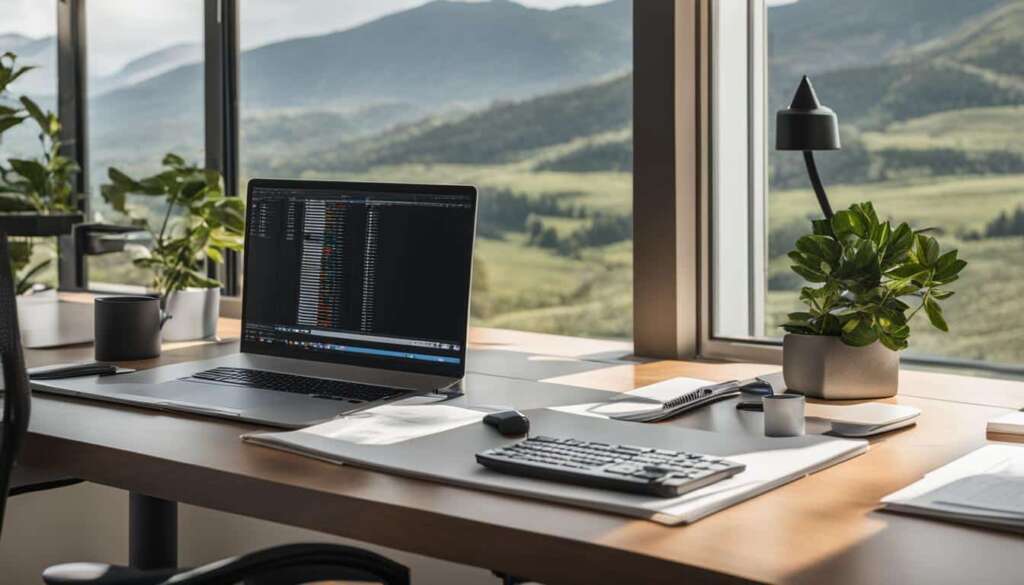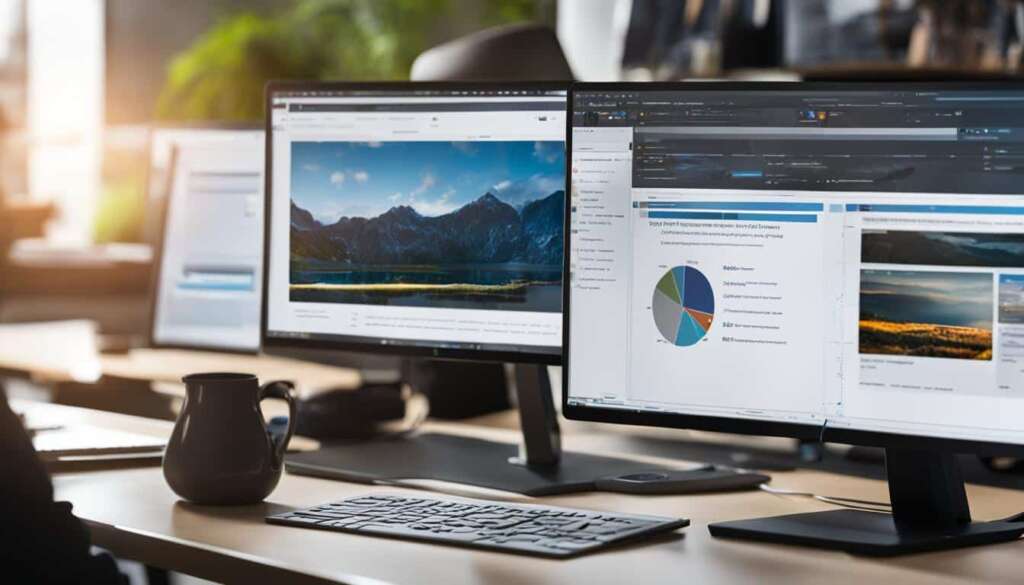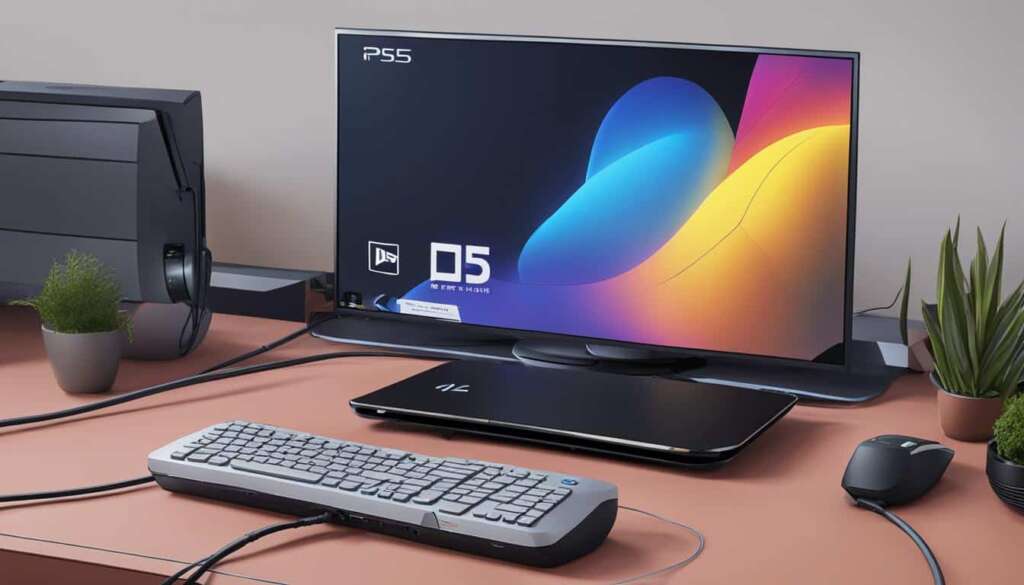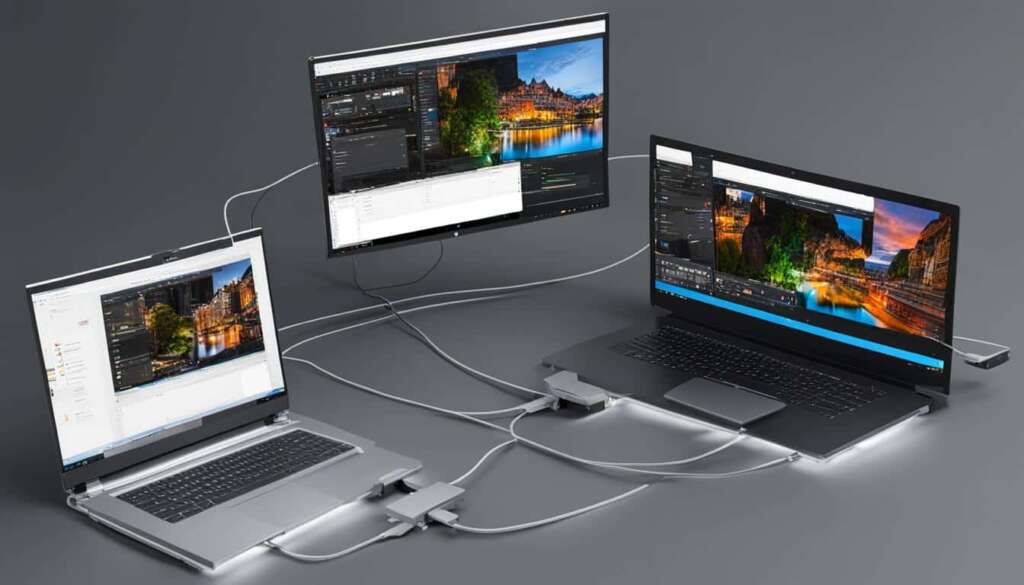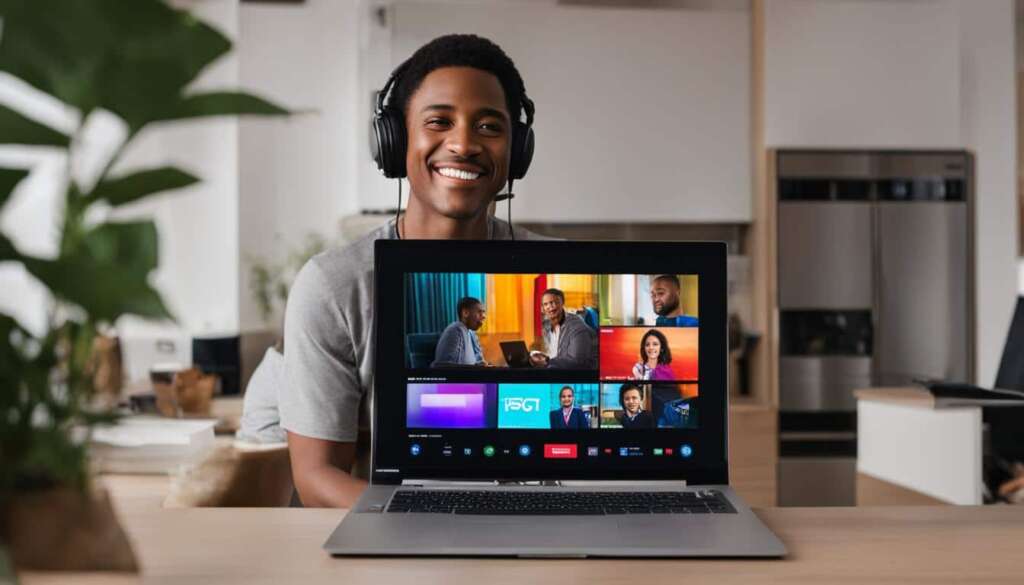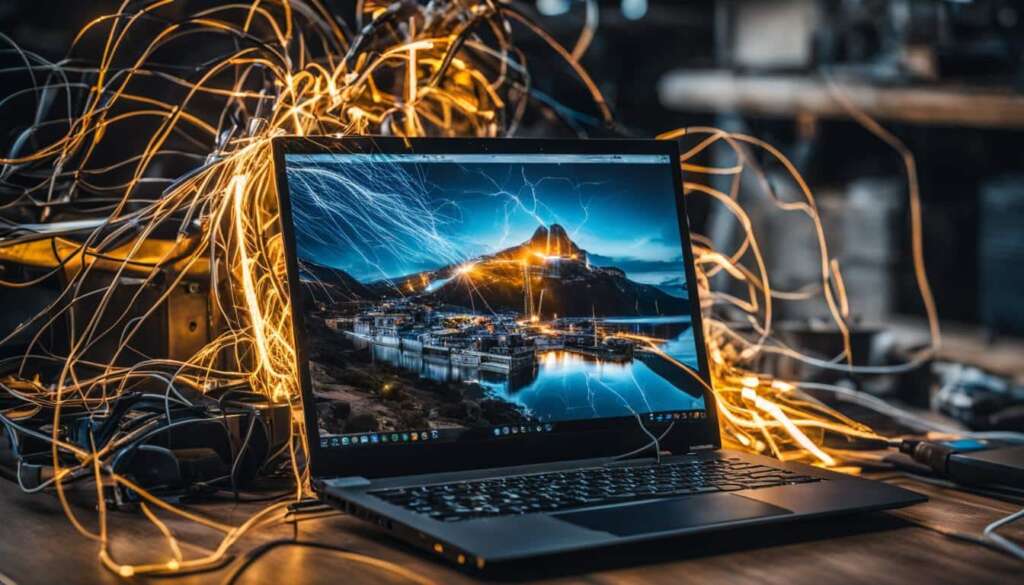Table of Contents
To enjoy a seamless viewing experience on your TV using your PC, connecting them with an HDMI cable is the way to go. Setting it up is easy, and we’ve got you covered with simple steps to get you started.
First, ensure you have an HDMI cable that is compatible with both your PC and TV. Connect one end of the HDMI cable to the HDMI port on your PC. The location of the port may vary depending on whether you are using a desktop or a laptop. For desktops, the HDMI port is usually found behind the CPU, while for laptops, it is located on the side of the keyboard.
Please note that some PCs may use different variations of HDMI ports, such as HDMI mini or MiniDisplay. In such cases, you will need two cables – an HDMI mini or MiniDisplay cable to connect to your computer and a regular-sized HDMI cable to connect to the TV.
If your PC does not have an HDMI port, don’t worry. You can use a VGA or DVI cable with an adapter, along with a separate audio cable. Another option for laptops without a video-out port is to purchase a USB-to-HDMI adapter.
Once you have connected one end of the HDMI cable to your PC, connect the other end to an available HDMI port on your TV. Use the TV remote to select the HDMI source, which is usually labeled as “Source” or “Input”. If your TV does not automatically display your computer screen, you may need to go to the Display Settings on your PC to detect the TV and adjust the resolution, if required.
By following these simple steps, you can connect your PC to your TV with an HDMI cable and enjoy a seamless viewing experience.
Connect PC to TV with HDMI Cable
One of the most reliable and simplest ways to connect your PC to your TV is by using an HDMI cable. HDMI cables transmit both video and audio signals between two devices, ensuring a seamless viewing experience. To connect your PC to your TV using an HDMI cable, plug one end of the HDMI cable into the HDMI output on your PC and the other end into one of the HDMI inputs on your TV. Use the TV remote to select the corresponding HDMI input.
This wired connection provides better picture quality and reduces lag time compared to other methods. With an HDMI cable, you can enjoy high-definition visuals and crystal-clear audio on your TV, enhancing your overall entertainment experience.
Tips for HDMI cable connection:
- Ensure both the PC and TV have HDMI ports available.
- Use an HDMI cable that is compatible with both devices.
- Insert the HDMI cable securely into the ports to avoid any loose connections.
- Choose the correct HDMI input on your TV to access the PC’s video and audio signals.
By establishing a direct HDMI cable connection, you can streamline the transmission of video and audio signals, resulting in optimal picture quality and minimal lag time. So, whether you’re streaming movies, playing games, or giving presentations, connecting your PC to your TV with an HDMI cable is the way to go.
| Advantages of HDMI Cable Connection | Disadvantages of HDMI Cable Connection |
|---|---|
| High-quality video and audio transmission | Requires physical cable connection |
| Reduced lag time for smooth viewing | Limited cable length |
| Supports high-definition resolutions | Not ideal for long-distance connections |
| Easy to set up and use | May require additional adapters for some devices |
Connect PC to TV Wirelessly
If you prefer a wireless connection, there are several options available. Firstly, you can connect your PC to your TV wirelessly using Wi-Fi. Make sure both devices are connected to the same Wi-Fi network. On your PC, go to the Display Settings and click on “Connect to a wireless display”. Select your TV from the list of available displays and follow the on-screen instructions to establish the connection.
If your TV or laptop doesn’t support wireless display (Miracast) technology, you can use a streaming device such as Roku to project your PC’s display onto the TV. Alternatively, if you have a smart TV with AirPlay capability (Apple TV or AirPlay 2-enabled smart TVs), you can use AirPlay to stream videos or mirror your PC’s screen on the TV. Simply make sure your laptop and TV are on the same Wi-Fi network, access the Control Center on your Mac, select “Screen Mirroring”, and choose your TV as the display device.
Another option for wireless connectivity is to use a Google Chromecast device plugged into your smart TV. Connect your Chromecast to the TV’s HDMI port, ensure that Wi-Fi and Bluetooth are enabled on your Chromebook, then select “Cast devices available” from the system tray and choose your TV to start casting your Chromebook’s content.
Comparison of Wireless Connection Options
| Wireless Connection Option | Supported Devices | Setup Process | Supported Features |
|---|---|---|---|
| Wi-Fi | PC, Smart TV | Straightforward | Screen mirroring |
| Miracast | Roku, PC | Simple with Roku device | Screen mirroring |
| AirPlay | Apple TV, Mac | Straightforward with Apple TV | Streaming, screen mirroring |
| Chromecast | Chromecast, Chromebook | Straightforward with Chromecast | Content casting, streaming |
Additional Tips and Troubleshooting
When connecting your PC to your TV with HDMI, you may encounter some common issues. Here are a few tips and troubleshooting steps to help you resolve them.
If you’re experiencing audio playing from your computer speakers instead of the TV, you can easily fix this. Go to the Control Panel, select Sound, and navigate to the playback tab. Look for your TV in the list of available devices. If you don’t see it, right-click in the white space and select “Show Disabled Devices” to check if it appears. By enabling the TV as the default playback device, you should be able to enjoy audio through your TV speakers.
To ensure the best display quality, it’s essential to adjust the screen resolution. Open the Display Settings on your PC and select the appropriate resolution for your TV. For HDTVs, choose 1920 x 1080 from the resolution drop-down menu. If you have a 4K TV, select the highest available resolution, such as 3840 x 2160. Adjusting the resolution ensures that your content looks sharp and vibrant on the TV screen.
If you notice that the screen appears zoomed in when connecting your laptop to the TV, you can fix this by adjusting the aspect ratio. Access the picture settings on your TV and select the appropriate aspect ratio option. This will ensure that the content is displayed in the correct proportions, eliminating any zooming or cropping issues.
If you wish to connect multiple displays, such as using both your PC monitor and TV simultaneously, you can easily configure this in the Display Settings. Choose the Multiple displays option and select the desired display mode. You can duplicate the displays, extending your desktop across both screens, or use only one of the displays based on your preferences. This allows for a versatile and efficient multi-display setup.
FAQ
How do I connect my PC to my TV using an HDMI cable?
To connect your PC to your TV using an HDMI cable, make sure you have a compatible HDMI cable that can be connected to both your PC and TV. Plug one end of the HDMI cable into the HDMI output on your PC and the other end into one of the HDMI inputs on your TV. Use the TV remote to select the corresponding HDMI input.
What are the advantages of connecting my PC to my TV with an HDMI cable?
By using an HDMI cable to connect your PC to your TV, you can transmit both video and audio signals, ensuring a seamless viewing experience. This wired connection provides better picture quality and reduces lag time compared to other methods of connection.
Can I connect my PC to my TV wirelessly?
Yes, there are several options for connecting your PC to your TV wirelessly. You can use Wi-Fi to establish a wireless connection between the two devices. Alternatively, you can use streaming devices like Roku or smart TVs with AirPlay capability (such as Apple TV or AirPlay 2-enabled smart TVs) to project your PC’s display onto the TV. Another option is to use a Google Chromecast device plugged into your smart TV.
How do I troubleshoot audio issues when connecting my PC to my TV with HDMI?
If you experience audio playing from your computer speakers instead of the TV, go to the Control Panel, select Sound, and look for your TV on the playback tab. If it’s not listed, try right-clicking in the white space and selecting “Show Disabled Devices”.
How do I adjust the screen resolution for optimal display when connecting my PC to my TV?
To adjust the screen resolution, go to the Display Settings on your PC. For HDTVs, select 1920 x 1080 in the resolution drop-down menu, and for 4K TVs, select up to 3840 x 2160 or the highest possible resolution.


